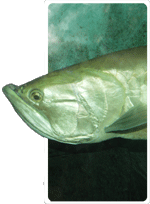


Changing water is essential in all aquariums. Even the most densely planted and lightly stocked aquarium will have a gradual build up of nitrates, which will eventually stress and kill the inhabitants. Furthermore trace elements within the water will be depleted.
Ideally a tank will have 10% of its water changed every week, or 20% every two weeks. In small, overstocked, overfed or tanks with messy inhabitants (piranhas, oscars, other carnivores) more water changes will be necessary. Likewise understocked tanks full of plants will not need so many.
First unplug anything electrical - heaters, filters etc. Water and electricity do not mix well. Water changes should be performed with a gravel syphon (like the ones advertised on the left); making sure to remove debris such as uneaten food, dead leaves and the mulm that builds up at the bottom. Syphons can be simple tubes which are started by sucking one end, or immersing the whole tube, capping one end with a thumb, then taking the capped end out and into a waste bucket. Fancier versions have a built-in pump to avoid the potential of a mouthful of water. And remember old tank water is full of nutrients and great for plants both indoors and out!
The new water should have similar qualities to the old water, particularly temperature and hardness. If you are attempting to change some parameter, try drip-filling the tank. This is done by slowly syphoning in the new water with a piece of airline over an hour or so.
The first sign that water changes are overdue is the presence of algae. Algae occurs when there is an excess of nutrients in the water. When the water has got really bad the fish will often be seen hanging around the surface 'gasping' for air. If you see this immediately perform a large water change, and investigate whether your filter is working, or a large inhabitant has died.